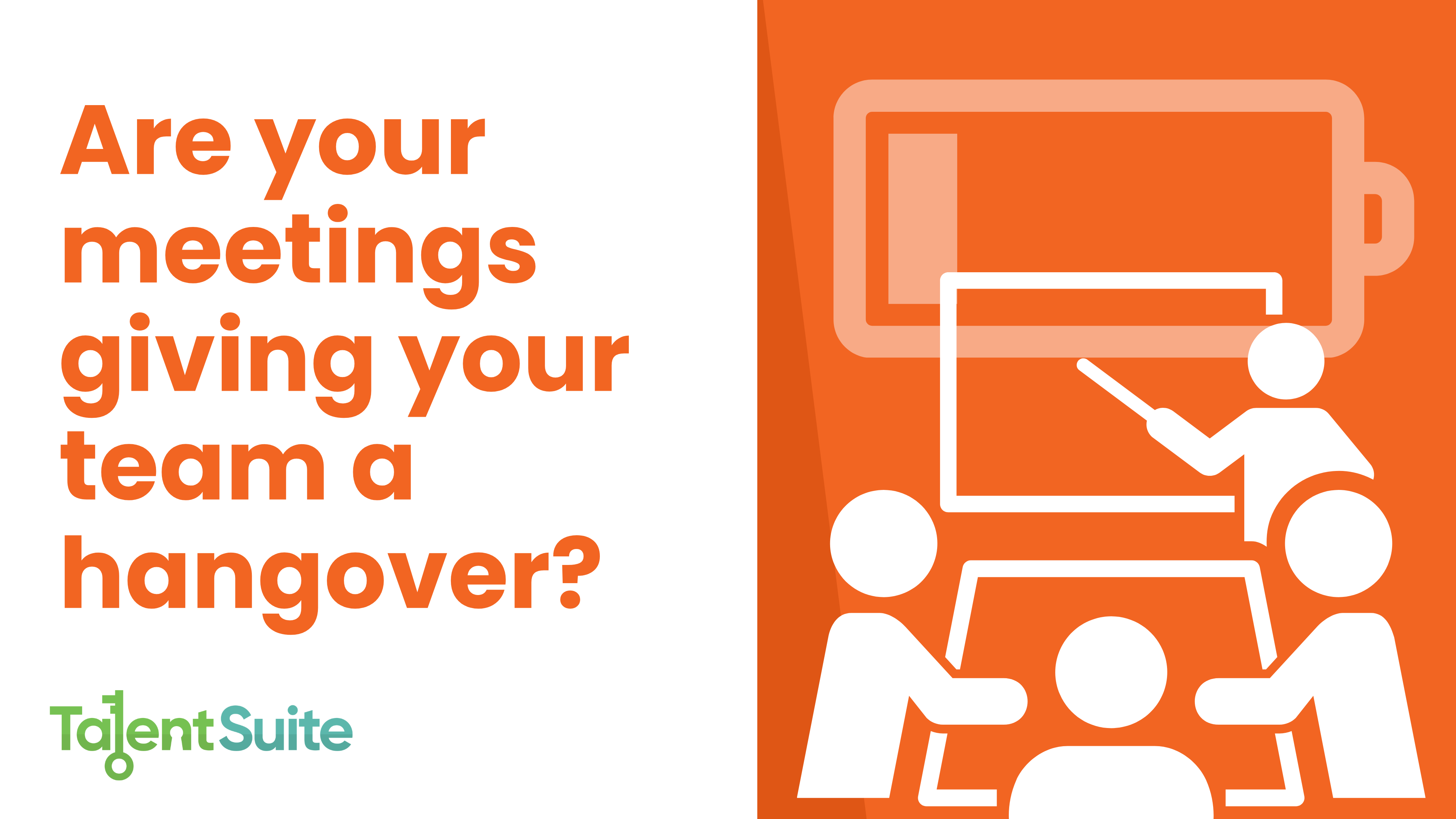
11 Apr Are your meetings giving your team a hangover?
You’re thirsty, your head is pounding, you’re wondering how you ended up here. No, it’s not an actual hangover, but a meeting hangover—that lingering frustration and mental fog that follows an unproductive meeting. Maybe the discussion went in circles, key decisions were left unresolved, or one person dominated while everyone else tuned out. The worst part? The effects don’t end when the meeting does.
Research from Harvard Business Review (HBR) found that more than a quarter of workplace meetings leave employees feeling disengaged, frustrated, and less productive for hours afterward. Instead of moving forward with clarity, teams are stuck replaying what went wrong, venting to coworkers, or struggling to refocus.
The data behind meeting hangovers
A recent study featured in HBR found that 28% of workplace meetings negatively impact engagement and productivity, sometimes derailing an employee’s entire workday. The most common reasons for meeting frustration include:
- Irrelevant topics that don’t apply to attendees (59%)
- No clear agenda or objectives (59%)
- Poor time management leading to wasted minutes (53%)
- No clear next steps or follow-ups (48%)
- Unequal participation, with some voices dominating and others never speaking (38-39%)
- Ineffective leadership in guiding the discussion (30%)
The problem isn’t just the number of meetings, but how they’re run.
How leaders can avoid meeting fatigue
Meetings don’t have to drain energy. The way a meeting is structured and led can determine whether it fuels momentum or leaves everyone struggling to get back on track. Instead of letting meetings turn into a free-for-all where only a few voices are heard, leaders can take steps to make discussions more productive.
Here are a few ways to turn things around:
- Facilitate, don’t dominate. Guide the conversation instead of controlling it. Make space for input instead of dictating every detail.
- Only invite the right people. If someone doesn’t need to be there, respect their time.
- Create focused agendas. Instead of vague topics, frame the discussion around specific goals and decisions that need to be made.
- Respect time limits. Meetings tend to expand to fit the time given. Keep them short and purposeful.
- Assign clear next steps. Every meeting should end with a plan, not just more talking.
Creating a better meeting culture
Meetings aren’t going anywhere, but they don’t have to be a waste of time. When leaders take a more intentional approach, prioritizing clarity, engagement, and accountability, meetings can drive results instead of dragging people down.
For those looking to go even deeper, behavioral insights can help leaders understand their own tendencies and how they impact team dynamics. Small shifts in approach can make a big difference in reducing frustration and boosting productivity.
At Talent Suite, we use data-driven behavioral analytics to help leaders improve communication, increase engagement, and create a more effective team dynamic. Whether it’s refining how meetings are run, strengthening leadership skills, or optimizing team collaboration, we help organizations build a culture where people can do their best work. Want to learn more? Let’s connect.
